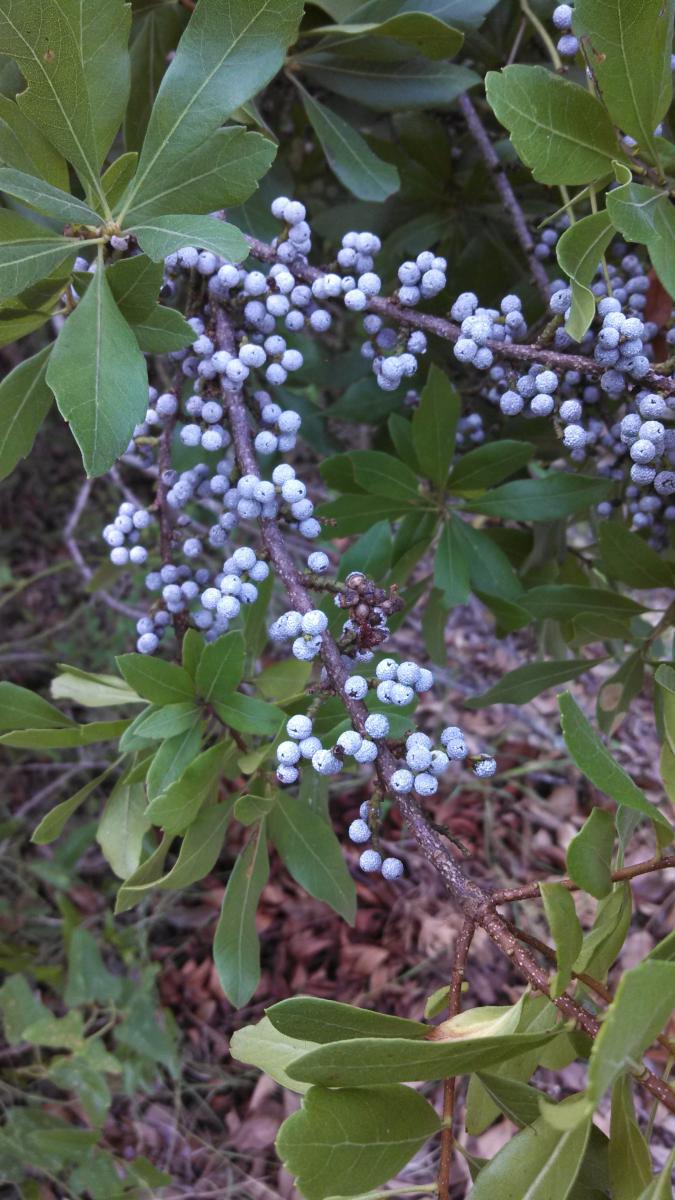DIY Holiday Greenery

Need some extra greenery for your holiday decorating? There might be something useful right in your own yard. Many native and adapted landscape plants are suited to cutting. Even though this is more of a harvesting activity than an official pruning, it is a good idea to follow some guidelines.
Guidelines:
- Use a pair of sharp pruners; cuts made with sharp, properly adjusted tools heal faster.
- Harvest from mature plants with plenty of vegetation to spare.
- Selectively prune. When removing stems or branches, keep in mind the plant’s natural growth habit.
- Cut branches back to their point of origin or back to a strong lateral branch.
Look around your yard for these native and adapted trees and plants!
Eastern Red Cedar


Photo Credit: Molle Freilicher (Left) and DM (Right)
Adds the “evergreen” touch and fragrance.
Wax Myrtle

Photo Credit: Grow Green Program (Left), and Suzanne Cadwell (Right)
The regular variety, not the dwarf, can get up to 15’ tall. They often have branches that hang over or stick out amongst the others.
Cherry Laurel


Photo Credit: Grow Green (Left and Right)
The nice glossy foliage makes them great in arrangements. A mature tree should have plenty of branches. Or, remove lower branches to raise the canopy height.
Yaupon Holly

Photo Credit: Grow Green (Left), and Lady Bird Johnson Wildflower Center (Right)
A densely branching, evergreen shrub or small tree that can take severe hedging and pruning. Females have decorative red berries.
Possumhaw Holly
Photo Credit: Sally and Andy Wasowki (Left), and David K. Northington (Right)
Red berries in winter with a lot of inner growth and crossing branches that can be removed.
Glossy Abelia


Photo Credit: Bri Weldon (Left), and Grow Green (Right)
On the larger varieties, you can selectively prune the ‘wild hairs’; aim for a naturalistic look. Do not shear these plants.
Cotoneaster


Photo Credit: Grow Green (Left), and Autan (Right)
Cotoneaster’s have many layers of branches which sometimes have red berries. Selectively choose erratic or crowded branches.
If you don’t have any of these plants in your landscape, consider planting some to “harvest” next year.
Get more information about tough Central Texas plants online in the Native and Adapted Plant Guide.
Article submitted by Denise Delaney, Grow Green, Watershed Protection.

Join us on social @NatureCityATX, where we're cultivating connections!

